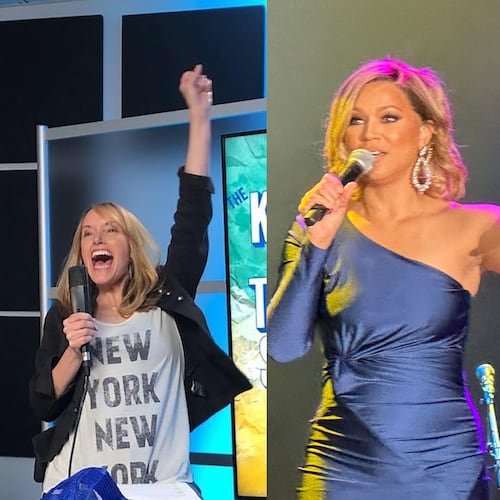Editor’s note: With live music and concert reviews on hold due to COVID-19, The Atlanta Journal-Constitution is focusing on how Georgia musicians are spending their time in our feature, Mic Check.
As a 14-year-old student at Carver High School, Kenny Mason was asked a question by his science teacher: who do you want to be?
He went home and watched an interview with rapper Kid Cudi, who, then 24, told the reporter that he had decided at the age of 14 that he would be a music star, and he figured it would take a decade to achieve that goal.
Mason had his answer.
“I told my teacher, I’m going to be an artist and a rapper. I didn’t know what she was going to say to that, and she said, ‘If you really mean it, then do it,’” Mason said.
Ever-grateful for that early encouragement — he wants to give a shout-out, but was concerned to publicize her identity — Mason, who currently lives in East Atlanta, recently released his new project, “Angelic Hoodrat: Supercut.” He calls it “an extended deluxe concept” of last year’s “Angelic Hoodrat” album, and crafted it primarily during the lockdown days of the pandemic.
The project, like its predecessor, blends Mason’s nimble rhymes with heavy guitars influenced by alt-rock and punk bands, as well as pop-inspired melodies.
Duality is a common theme in Mason’s music, and the now-26-year-old talked about his varied musical influences and what it means to be an “angelic hoodrat.”
Q: If the first “Angelic Hoodrat” was your introduction, what did you want to accomplish with the “Supercut” follow-up?
A: I wanted to make it a thank you to the people who listened originally. Some of the songs on here came out already when I put them out for free on YouTube, so it’s also just a thank you package to the people who listened to the leaks off the album. I made a lot of music during the pandemic, so I’ll have a few songs after this that are tied to the same concept. But it’s scheduled out to give me time to figure out the next (album). I wanted to take advantage of being locked in the house for a year. I’ve got a lot of family members who had a really hard time last year with losing jobs, and I never want to come across as complaining about it. It would be incredibly insensitive of me. I’m blessed.
Q: The song “Play Ball” is a pretty straightforward rock track and then “Rih” goes back to trap, and “Pup” has a little bit of everything. When you’re in the studio, what or who are you drawing on for inspiration?
A: I listen to a lot of music, and I always have; some stuff just bleeds into me anyway. As far as the actual words, I’m more inspired by things people say to me, even on the rock songs. Even those will have Atlanta lingo, so word-wise, it’s more about the people in my life. I watch a lot of movies with the captions on, and sometimes I can pull a good line from something.
Q: What’s behind the term “angelic hoodrat”?
A: I said it on a line freestyling, and then one of my friends heard it and said, this phrase would be a good title of a song or project. As the project was going, it just made sense to make it the title. It’s a real duality between the music I’m making and me as a person. The struggle with the angel and devil on my shoulder. I always have new ideas and will go deeper in myself, and this album will always be here for people to come back to.
Q: How did you get turned on to bands like the Pixies and Nirvana?
A: I think it came from me playing video games. I would be listening to the “Madden (NFL)” soundtrack or the WWE games and motor cross with Tony Hawk and all these different types of music and rock and punk and grunge. I just liked the songs when I was real young, and that just made me want to research them. And then I found others in that style and the forefathers of these styles. When I like something, I indulge in it.
Q: In the video for “Hit,” you’re cruising around town. How important is it to you to keep Atlanta culture alive in your music?
A: I don’t ever want to leave. I think the city culturally is evolving at a rate like no other city, but I’m biased being born and raised here. I’ve seen a lot of movements come and go, but I know the real DNA of things. It means so much to be to not only be a part of that, but to influence that and take it to the next level. It’s something I try to keep in mind, not to get too lost in myself. I have to remember I’m still doing this for my city, and these kids in my city who want to do different stuff. I think I’ve got the opportunity to create maybe a new kind of artist, in the most humble way, from this city. I’d like a lot more artists to feel that way. This city is a melting pot.
About the Author
Keep Reading
The Latest
Featured




